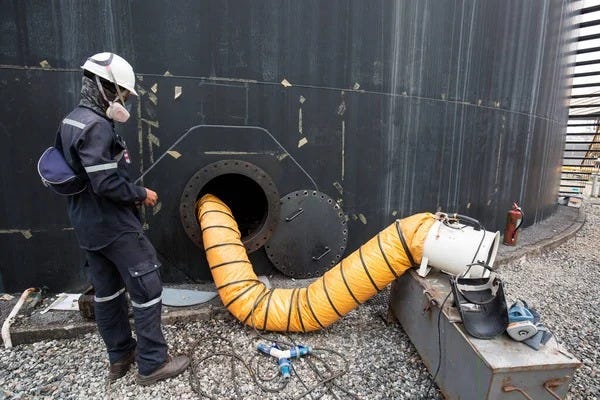Navigating the Risks: Best Practices for Working in Confined Spaces
Working in confined spaces presents unique challenges and significant risks that demand strict adherence to safety protocols. These areas, characterized by limited entry and exit points, poor ventilation, and potential exposure to hazardous substances, require specialized training and equipment to ensure worker safety. Understanding the best practices for working in confined spaces is essential for minimizing risks and protecting the health and well-being of employees.
Identification and Assessment of Hazards
The first step in ensuring safety when working in confined spaces is to conduct a thorough assessment of the potential hazards. This includes identifying the presence of toxic gases, lack of oxygen, flammable substances, and physical hazards such as machinery or unstable structures. Conducting atmospheric testing before entry is crucial to determine if the air quality is safe. Continuous monitoring during occupancy can help detect any changes in conditions that may pose a risk.

Proper Training and Certification
Employees who work in confined spaces must undergo comprehensive training that covers hazard recognition, proper use of personal protective equipment (PPE), emergency response procedures, and rescue techniques. This training should be updated regularly to ensure employees remain proficient in the latest safety practices and regulatory requirements. Certification ensures that workers are adequately prepared to handle the specific challenges of confined spaces.
Use of Appropriate Equipment
Equipping workers with the right tools and protective gear is vital for their safety. This includes respiratory protection, harnesses, helmets, and gloves. Ventilation systems may be necessary to ensure a supply of fresh air and to mitigate the buildup of hazardous gases. Additionally, communication devices enable workers to stay in contact with the safety team outside the confined space, ensuring a quick response in case of emergencies.
Emergency Preparedness and Rescue Planning
Having a detailed emergency plan in place is essential for responding to incidents effectively. This plan should include clearly defined roles and responsibilities, evacuation procedures, and coordination with emergency services. Rescue equipment, such as tripods and winches, should be readily available and regularly inspected to ensure functionality.
Working in confined spaces requires a heightened awareness of potential hazards and a commitment to stringent safety protocols. By conducting thorough hazard assessments, ensuring proper training and certification, using appropriate equipment, and having a robust emergency response plan, employers can significantly reduce the risks associated with confined space work. Adhering to these best practices not only protects employees but also fosters a culture of safety and compliance within the organization.
Comments
Post a Comment